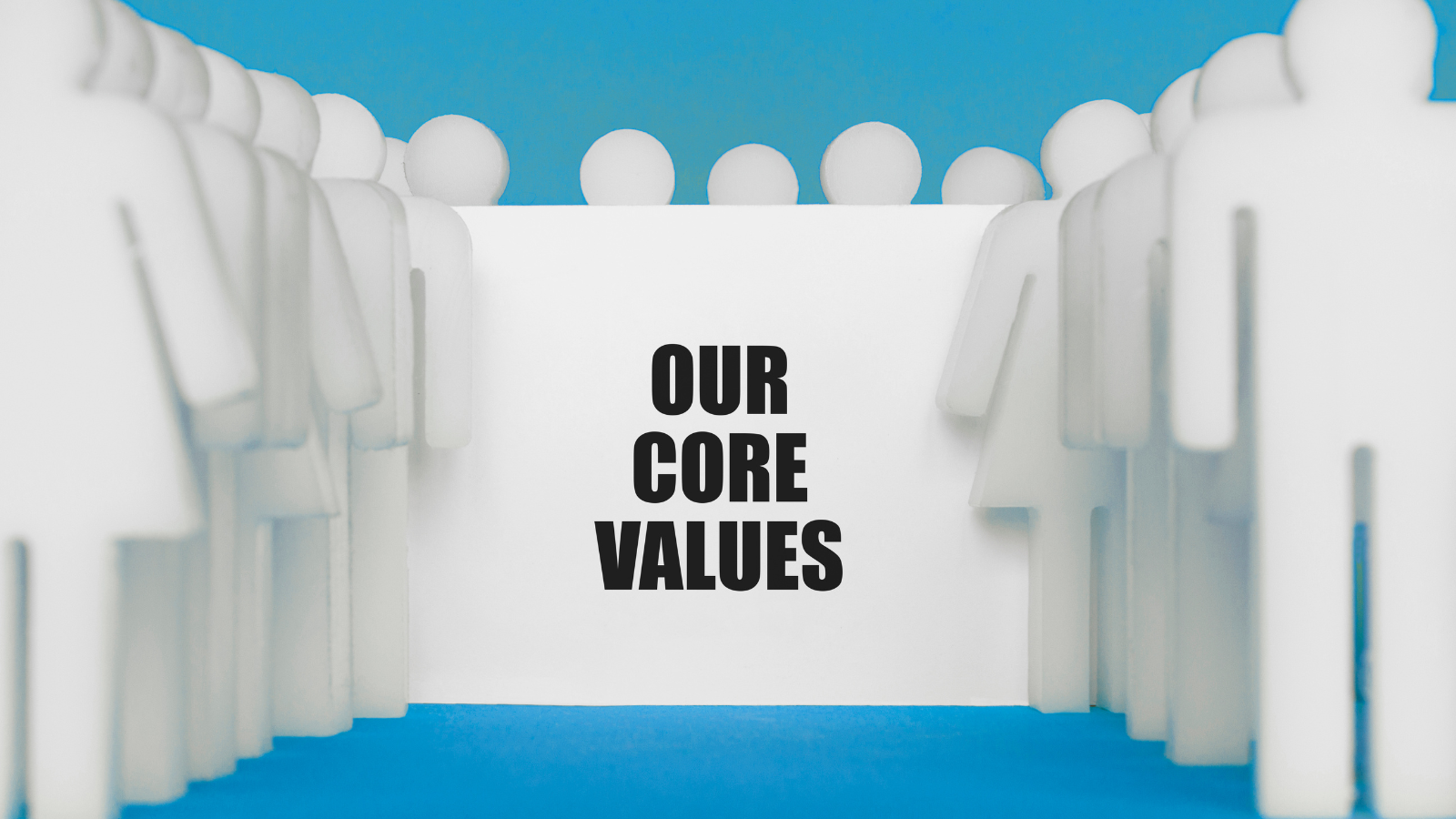
We often talk about the importance of core values for a company. The words that define who you are as a company provide an understanding of how you operate and the behaviors you expect from those that work there. Core values tell us many things about you:
- How you treat each other and work together
- How you talk to each other
- The way work is assigned and completed
8 Ways to Align Your Core Values With The Behaviors of Employees
 The core values at our company are Quality, Integrity, and Responsiveness.
The core values at our company are Quality, Integrity, and Responsiveness.
When you join our team, it's expected that you live these words daily in your work. How we respond to clients and each other is defined for us by these words. Even the order of these words sets expectations. We don’t respond quickly if the quality isn’t there. We never respond without having the best intentions in mind, either.
It's much easier to live by company core values if your personal core values (the expectations we have for ourselves in life) align with the company. This alignment makes the culture fit right for the company and the employee.
When there is a disconnect between company core values and personal core values, disengagement begins, or engagement never happens between the two parties. This may lead to behaviors that are hard to manage.
When you have company core values, it's imperative that you properly define these words for every employee and set expectations for their behaviors from the start, even before they begin their first day. Sharing the significance of your core values gives people a north star to follow.
But what happens when the behaviors of employees do not align with your core values? What is the best course of action for you to take?
1. Ask yourself if you have clearly defined expectations of each core value.
Don’t assume people understand the meaning of these words. Although it may feel obvious to you, it may not be to others. You may need to talk more often about their meaning and explain explicitly what behaviors are expected.
As an example, here is how we define one of our core values.
Integrity:
- We always follow our moral and ethical convictions, and we do the right thing in all circumstances, even when no one is watching.
- We never purposely mislead a client, prospect, or worker for a person or corporate gain.
2. Schedule time for a conversation.
If you don’t see behaviors aligning with your core values, it's time to have a one-on-one conversation.
Prepare your talking points in advance so that you remain calm and collected while sharing what you noticed. Discuss the specific behaviors that are not aligning with your core values.
If we never purposely mislead a client, but an employee has done this, then there needs to be a direct conversation about what happened and what needs to change in the future. Without this conversation, the person may continue down the wrong path.
You may find it helpful to share a few examples of doing things the right way to add further clarity.
It will be important to hear what led to compromising your core values, so your next step is to ask.
3. Be curious and ask questions.
Spend time asking questions and listening to their thoughts to uncover why there may be an issue or misunderstanding of expected behaviors. This is your chance to uncover more.
To truly understand the full meaning of what is being said, you must listen with intent and then communicate your understanding back to the other person. Asking questions promotes discovery and insight.
Having a better understanding of the circumstances that may not align with your core values, allows for discussion on expectations in the future.
4. Manage expectations (theirs and yours).
Clearly message the behaviors that align with your core values.
Challenge some of the remarks you hear but in a non-threatening way. In other words, while demonstrating you value the opinion of the person talking, it will be important to push back where appropriate and work with them to understand the expected behaviors.
Setting and managing expectations are critical and set the tone for required actions at your company. This should be a black and white conversion, with no gray areas for misinterpretation for future behavior.
5. Discuss the next steps with clarity.
After managing expectations, ask what steps they will take to change course and offer your support as they work to head in the right direction.
It will be important for them to share back with you the expectations they hear. While they may nod “yes” during your conversation, that doesn’t mean they agree with you. That could simply be their way of showing you they are listening.
To set them up for success, it will be important that you hear that they clearly understand what your core values mean and the behaviors they will be expected to live by. They should be able to tell you how they will handle the same situation moving forward.
6. Check in regularly.
Now that expectations are clear, you will need to regularly check-in to ensure everyone remains on course. Continue to ask questions or provide feedback on behaviors you have noticed since you last met.
Keeping these expected behaviors in mind for every decision made, allows everyone to understand the value you place on your core values. Consider asking, “How does this decision line up with our core value of Integrity?” The more you check in and communicate this with your people, the more aligned they will be to what is important to you.
7. Recognize progress if it is made.
During these regular check-ins, celebrate the positive behaviors you notice that align with your Core Values, so they know they are on the right path. When you commend someone, you share that you noticed the changes they have made to consciously improve.
People crave feedback. Be specific in your praise, naming the core value you saw in action and the positive changes you see. It allows them to know when they are aligning with expected behavior.
8. Be firm in your convictions.
Stand firm in what your core values mean as a company. If course corrections are not made, it may be time to ask them whether this is the right company for them. Making it about WHO you are as a company allows them to decide if they want to change or move on.
Setting the tone that no matter how much someone contributes to the company, everyone is expected to live by the values that are core there with no exceptions.
Conclusion
Remember, your core values are words that define who you are as a company, providing an understanding of how you operate and the behaviors you expect from those that work there. Don’t let these just be words on a wall. Ask yourself, “Are the words on the walls, happening in the halls?”
Knowing how important it is that your employees align to who you are as a company, a best practice is to hire those who embody your core values every single day. Bringing people on board who naturally align with how you treat each other and work together will lead to a stronger culture and more engaged employees.







![Is Your Company Culture Just Lip Service? [Infographic]](https://uyc.thecenterforsalesstrategy.com/hubfs/Is%20Your%20Company%20Culture%20Just%20Lip%20Service%20%5BInfographic%5D.png)


LEAVE A COMMENT